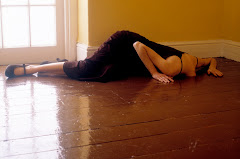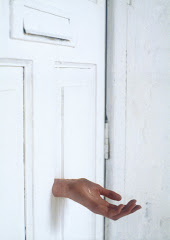Saturday, 15 May 2010
Anchor Series
Since 2003 I have been making the 'anchor series'; a series of impromptu interventions tailored uniquely to a building or space that explore the threshold between bodily self and material thing. As I journey around a site, usually unknown to me before I arrive, I attempt to fit my body into the nooks and crannies, holes and cavities that exist within its architecture and the objects found there, using my body as a medium through which to explore the poetic life of a building and the playful encounter that occurs between audience, body and site.
This work has been consistently influenced by ideas of embodiment in relation to environment, in particular Roger Caillois' essay examining insect mimicry: 'Mimicry and Legendary Psychasthenia', which first appeared in the Surrealist journal Minotaure. Caillois proposed that insect mimicry had no survival value and was instead a confusion between an insect and its environment. He linked this behaviour to a kind of spatial psychosis, where the subject feels that their identity no longer resides within the boundary of the body but is lured out into space. 'The feeling of personality, considered as the organism's feeling of distinctness from its surroundings, of the connection between consciousness and a particular point in space, cannot fail under these conditions to be is seriously undermined...'
(Roger Caillois, "Mimicry and Legendary Psychasthenia," translated by John Shepley, in October: the First Decade, 1976-1986, edited by Annette Michelson, Rosalind Krauss, Douglas Crimp, and Joan Copjec (Cambridge, Mass.: MIT Press 1987), p.70. Caillois's essay was first published in Le Mythe at l'homme (Paris: Gallimard, 1938), and in a shortened version in Minotaure a year before.)
The anchor series has also been influenced by my personal discovery of the figure of the anchoress. A medieval female hermit, the anchoress was usually a nun who chose to be shut up for life inside a small room attached to a church. This act of living entombment and incarceration I find both deeply fascinating and disturbing, metaphorically mirroring some of my own artistic concerns: the housing of the body in site; the rite of disappearance and loss; a vision of the sanctity of bricks and mortar, protected, anchored and mediated through a human presence. 'It is for this reason that an anchoress is called an anchoress, and anchored under a church like an anchor under the side of a ship, to hold it, so that the waves and storms do not pitch it over.' (Ancrene Wisse).
Subscribe to:
Post Comments (Atom)










No comments:
Post a Comment